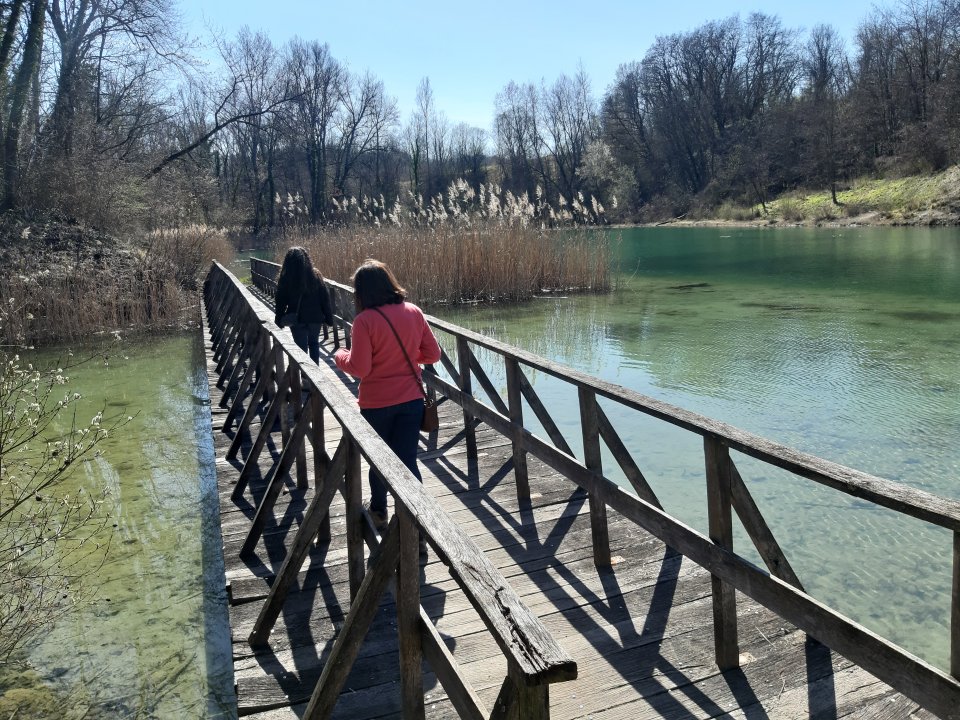
"Rhone genevois" is a large pondscape (area : 15 km2) located in Switzerland, near the city of Geneva (600'000 inhabitants). 46 ponds have been created between 1970 and 2018. The ponds vary in age (5 to 50 years), in size (from 15 to 36’000 m2) and depth (from 60 cm to 5 m deep). The dominant landcover inside the pondscape is agriculture and woodland. A large part is accessible by the public (91%-outside protected areas).
This pondscape is of international importance for waterfowl (part of Ramsar site Nr 506) and most ponds are also considered of national importance for amphibians. The ponds benefit from strong statutory protection.
Their management is financially supported by subsidies from the government (65%), and it is conducted by the regional authorities (Canton) and implemented by private consultancies. This management includes protection, conservation and regeneration of existing ponds, as well as the creation of new ponds and the maintenance of their good quality through management actions. Moreover, funding from the hydropower company of Geneva (“SIG”) supports the creation of new ponds. This policy framework allows on one side effective and successful protection and promotion of pond biodiversity, and on another side the enjoyment by the population of the nature, fauna and flora. The good collaboration and synergy between the Canton, the NGOs and private consultancies is also a key factor in the fruitful and effective implementation of the NBS.
15 large ponds (5000m2 to 30’000m2) as well as many medium and small sized ponds have been created between 1970 and 2018. Some ponds have been dug to rehabilitate and recreate natural habitats in brownfields and others to create recreational activities such as swimming and fishing. They depict the multiple roles a pondscape can play.
The objective of the spatial delimitation of these pond uses is to promote simultaneously the protection of pond biodiversity and the delivering of numerous NCPs.
This is here a landscape scale NbS, with the implementation of a large set of smaller scale NbS. These are especially several features for managing the flow of visitors altogether with the full protection of several natural areas: footpath, parking, barbecue, beach, fences, pontoons for fishing and observatories. The biodiversity is monitored, with also the reintroduction of threatened species (e.g. european pond turtle) and creation of habitats for the targeted species (e.g. toads, swallows). The bird-watching is also promoted in several locations. ding on local geological context.
- Restoring ecosystems and their functions
- Improve connectivity and functionality of green and blue infrastructures
- Increase Biodiversity
- Increased cultural richness and biodiversity
- Increase accessibility to green open spaces
- Increase well-being
The keys of success rely to:
(i) arranging an heterogenous set of multiple ponds instead on focusing on creating individual multifunctional ponds
(ii) implementing a management plan and the regulation of the flow of visitors
(iii) enabling a good collaboration and synergy between local authorities, NGOs and private consultancies
With all these elements, this pondscape constitutes a good example of an NbS contributing to Biodiversity enhancement, to Human health and to Climate mitigation. This type of NbS can potentially be included in local strategies and policies, and can therefore also benefit of subsidies. The costs can also be covered with the selling of the materials extracted on site (e.g. gravel), depending on local geological context.
- 3. Good Health and Well-being
- 14. Life Below Water
- 15. Life On Land
